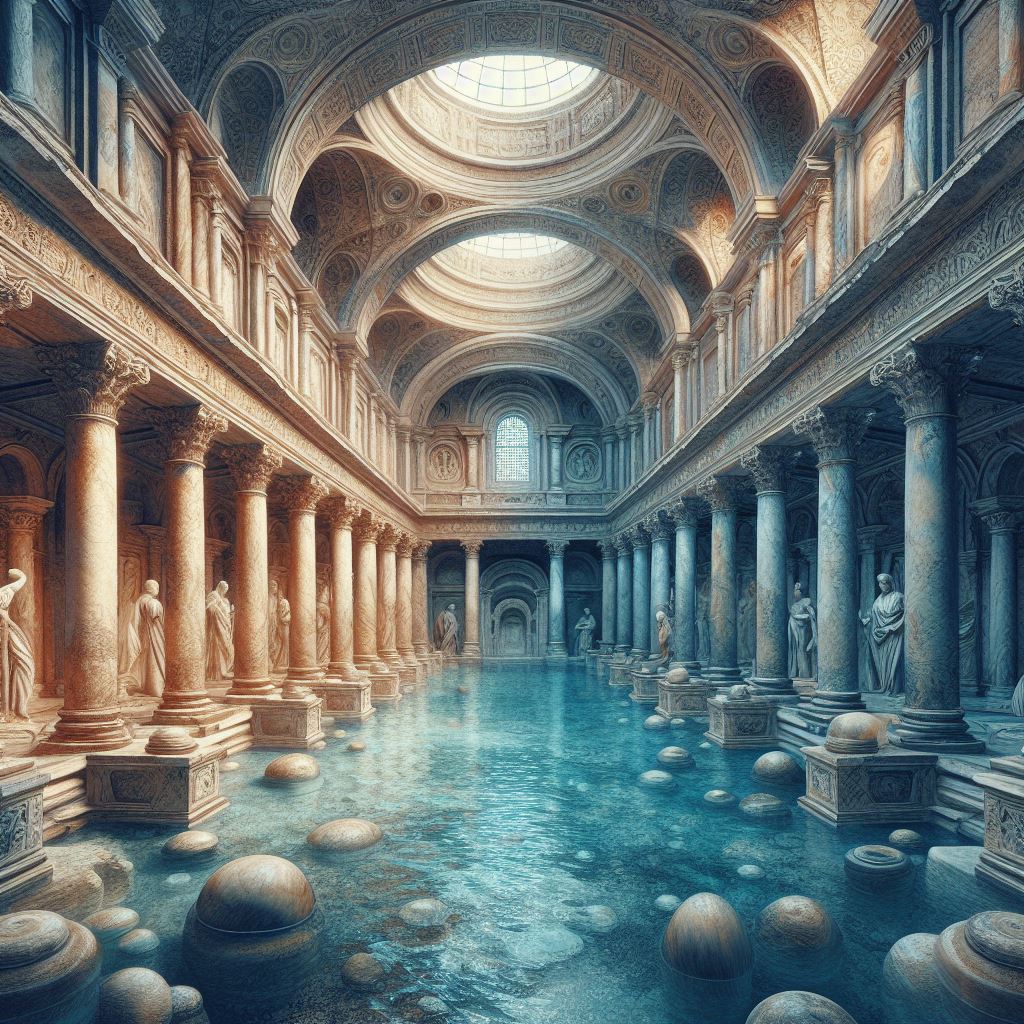Embark on a journey through time to explore the marvels of Roman baths – architectural wonders that not only cleansed the body but also served as epicenters of social life and well-being in ancient Rome. These grand structures, steeped in history and adorned with opulent decorations, offer a glimpse into the intricate rituals and vibrant culture of the Roman Empire.

A Glimpse into History: Origins of Roman Baths
The story of Roman baths dates back to around 300 BCE, when the Romans began constructing elaborate public bathing facilities inspired by the Greeks. Initially, these baths were simple structures, but over time they evolved into grand complexes adorned with intricate mosaics, marble columns, and lavish decorations.
An Oasis of Relaxation: Inside Roman Baths
Step into the world of Roman baths, and you’ll find yourself surrounded by a symphony of sights, sounds, and sensations. The heart of the bathhouse was the “caldarium,” a heated room where bathers would sweat out impurities before indulging in a series of baths at varying temperatures. From the scorching heat of the “caldarium” to the refreshing plunge of the “frigidarium,” each chamber offered a unique experience aimed at cleansing the body and rejuvenating the spirit.
Socializing in Style: Roman Baths as Gathering Places
Roman baths weren’t just about getting clean – they were also bustling hubs of social activity. Here, people from all walks of life would come together to relax, gossip, and forge connections. Whether discussing politics in the “tepidarium” or engaging in friendly competition in the exercise yards, Roman baths provided a space for community bonding unlike any other.
The Healing Power of Water: Roman Baths and Well-being
Beyond their social significance, Roman baths were also revered for their therapeutic properties. The ancient Romans believed in the healing power of water, and bathhouses often featured mineral-rich springs believed to cure various ailments. From soothing sore muscles to alleviating skin conditions, a visit to the baths was seen as a holistic remedy for both body and mind.
Engineering Marvels: Construction of Roman Baths
The construction of Roman baths was a feat of engineering brilliance. These sprawling complexes required intricate systems of aqueducts to supply water, as well as sophisticated heating mechanisms to regulate temperatures throughout the bathhouse. Skilled artisans adorned the walls with stunning frescoes, while craftsmen sculpted intricate statues to adorn the grand halls – a testament to the ingenuity and craftsmanship of the ancient Romans.
Legacy of Roman Baths: Influence on Modern Culture
Although the glory days of Roman baths have long passed, their influence can still be felt in modern culture. From the elegant spa resorts of today to the enduring popularity of communal bathing in cultures around the world, the legacy of Roman baths lives on as a testament to the enduring appeal of relaxation, socialization, and well-being.